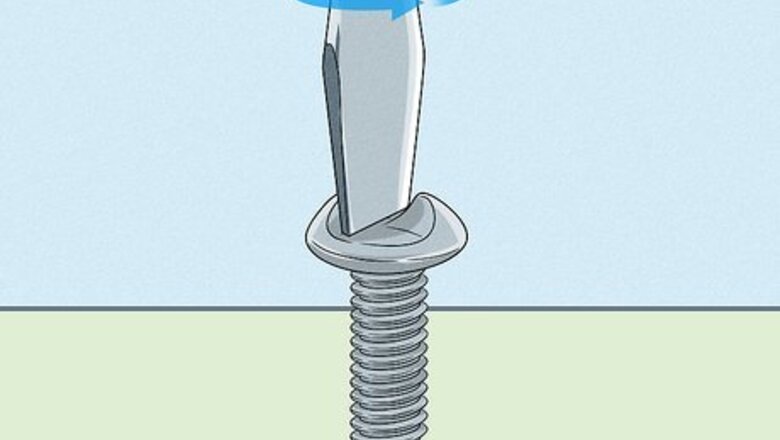
views
Extracting Screws with Locking Pliers

Loosen the one-way screw with a flat-head screwdriver. If you’re lucky and the one-way screw is very loose, you may be able to unscrew it slightly using a regular screwdriver. One-ways screws come in sizes from #6 to #14, so you’ll need to use the corresponding size regular screwdriver to loosen it. Most screwdrivers will have their size number printed on the handle. Hold the head of the screwdriver up to the one-way screw head until you find a size match.
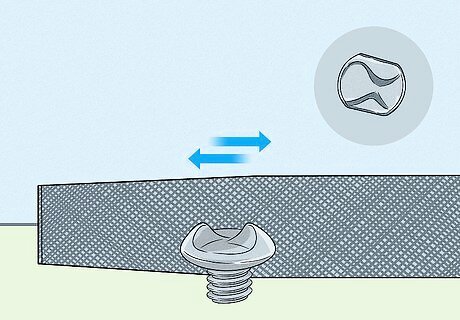
Flatten 2 opposing sides of the screw head with a file. Scrape a hand-held file back and forth across 2 opposite sides of the screw head. The abrasive file will flatten 2 portions of the round screw head. This will allow your pliers to have a firm grasp on the flattened portions of the screw. If you don’t file flat portions into the screw head, your pliers may just slip off when you try to remove the screw.
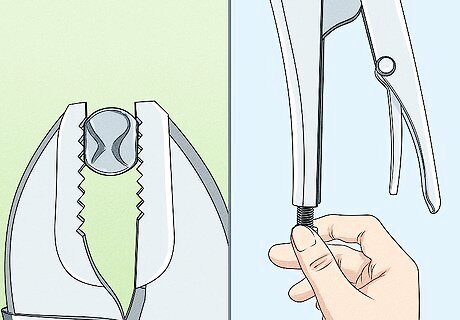
Fasten a pair of locking pliers around the screw head. Take a small pair of locking pliers and squeeze the pincers snugly around the head of the one-way screw. Twist the small knob at the base of 1 of the pliers’ arms until the pliers are set to lock at the exact diameter of the screw head. Then, squeeze down on the handle so that the pliers clamp shut around the screw head. Purchase locking pliers at a local hardware store. These pliers are called “locking” because one of the arms contains a knob which, when turned, sets how far the pliers can open. The other arm contains a bar that, when clenched against the arm of the pliers, will “lock” the head of the pliers in place.
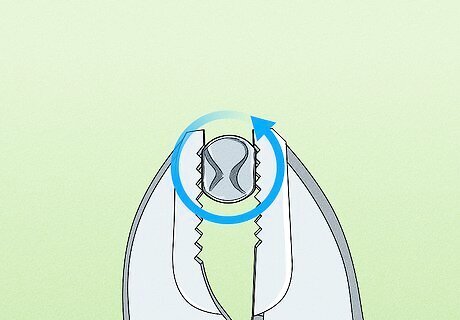
Unscrew the screw by slowly twisting the pliers counterclockwise. Once you have a good grip on the screw head, rotate the screw head to the left to loosen the screw threads. Once you’ve made 6-7 complete rotations, you should see the threaded body of the screw emerge from the hole. If the screw slips out from the head of the pliers, simply put the pliers back in place and continue unscrewing. If the screw continues slipping out from the pliers, place a rubber band around the head of the screw. Then try to use the pliers again. The rubber will help the pliers better grip the screw.
Removing the Screws with an Extractor Tool
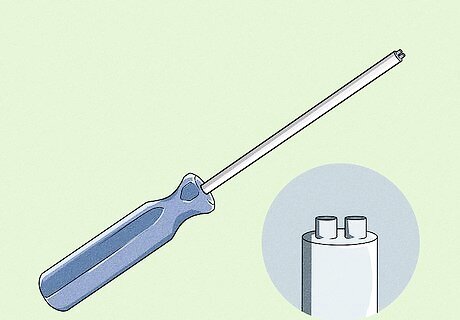
Purchase a one-way screw extractor tool from a hardware store. Removal tools look like a typical screwdriver but have 2 steel pins located at their end. One-way screw removal tools come in different sizes based on the size of the screw itself. Common extractor tool sizes include sizes for #6-8 size screws, for #10-12 size screws, and for #14-16 size screws. So, you’ll need to find the size of the screw and purchase the removal tool that corresponds to that size. One-way extractor tools may be difficult to find. If they’re not in stock at your local store, try to find a tool through major online retailers or at large home-goods supply stores. A extractor tool costs about $25 USD.
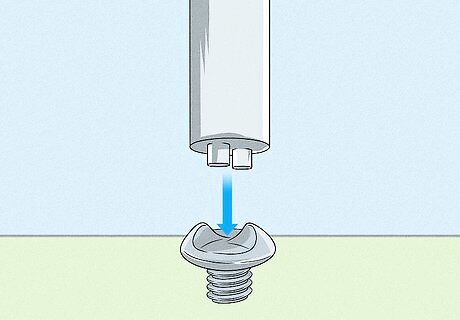
Set the tool’s steel pins against the rounded edges of the screw head. Hold the tool as if you were holding a typical screwdriver, and set its pins in the open slot on top of the screw’s head. It should fit into position against the screw head’s rounded sides. Keep in mind that, while they’re a useful tool, extractor tools are not guaranteed to work. For example, if the screw was driven into wood or screwed in with a power driver, you probably will not be able to remove it with the extraction tool. Try drilling through the head to remove the screw.
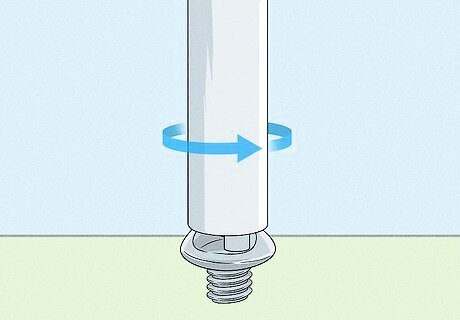
Turn the extractor tool counterclockwise to remove the one-way screw. Press the 2 steel pins forward into the screw head while you’re twisting. As you’re twisting the extractor, you’ll need to maintain substantial pressure on the handle to keep the extractor tool from slipping out of the screw head. Once you’ve extracted the screw head by about ⁄2 inch (1.3 cm), you may be able to grab it with your fingers and finish unscrewing by hand.
Drilling Through the Head to Remove the Screws
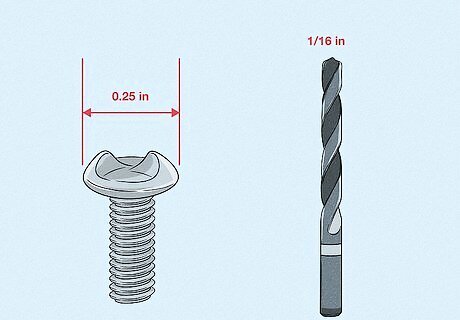
Select a drill bit that’s ¼ the diameter of the screw head. This will ensure that the drill bit is roughly the same diameter as the screw shaft. You can use this drill bit to drill through the screw head and down to the shaft of the screw. This method will destroy the head of the screw, but is effective at removing the screw. If you don’t have a power drill and drill bits, you can purchase them at a local hardware store.

Drill counterclockwise into the center of the one-way screw. Position the center of the drill bit over the middle of the screw head, and begin drilling straight into the screw. Be sure that you’re drilling counterclockwise. Most drills have a switch you can flip to alter the direction that the drill bit rotates. This process is messy and will leave a pile of metal shavings below the spot where you’re drilling.
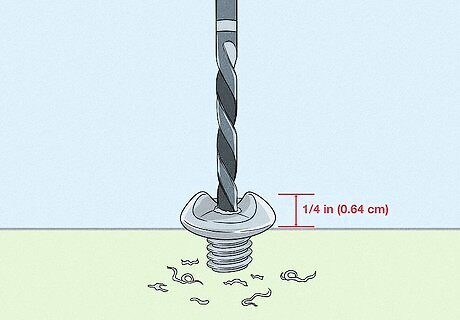
Continue drilling counterclockwise until the bit is ⁄4 inch (0.64 cm) deep. The idea is to keep drilling until the drill bit passes through the screw head and into the part of the screw that has threading. Since you’re drilling counterclockwise, the drill bit will catch the screw threads and begin to extract the screw.
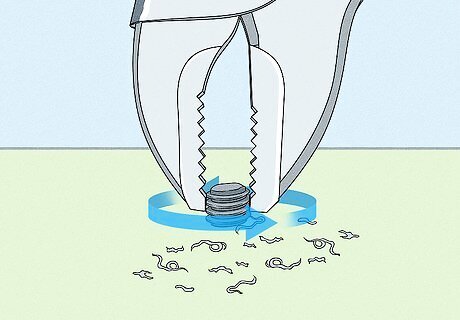
Remove the screw shaft with locking pliers. Take a pair of locking pliers, and fasten them securely around the top of the screw’s shaft. Turn the screw counterclockwise so that it begins to loosen. Continue unscrewing the shaft until you can fully withdraw it from the hole. Clean up any mess made from drilling once you’ve extracted the screw.




















Comments
0 comment